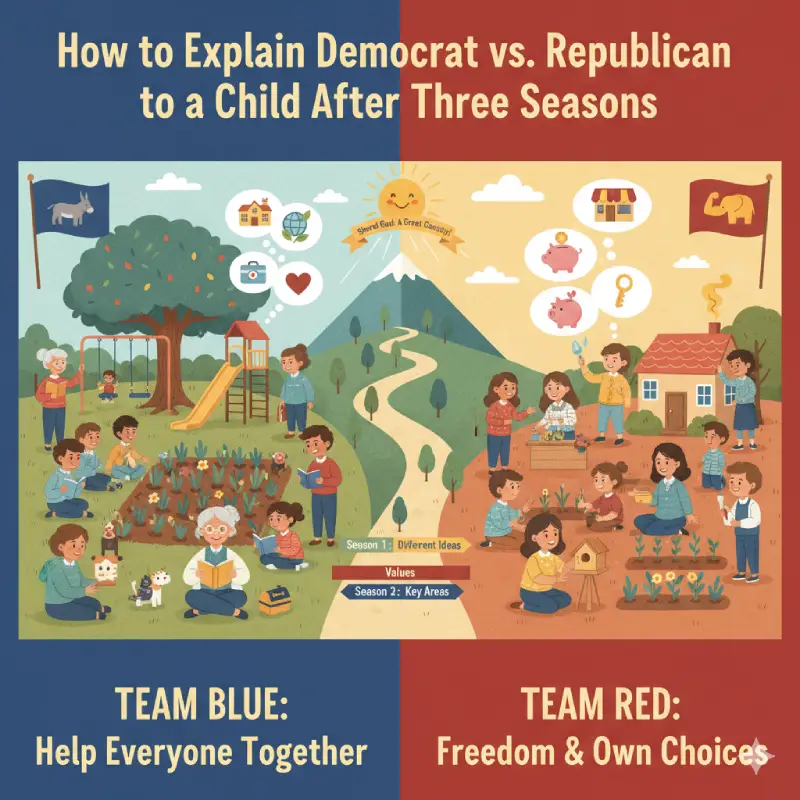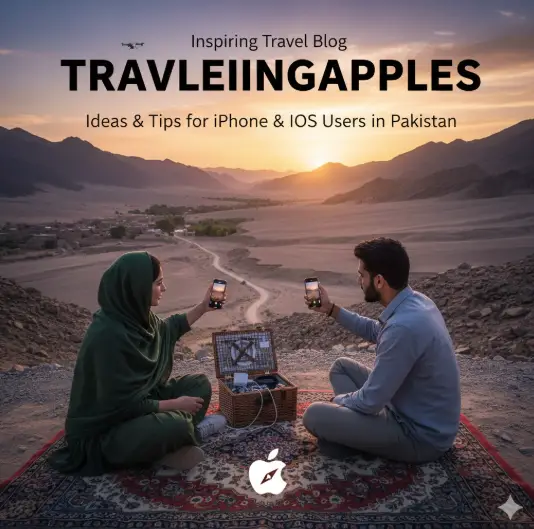Kids see political ads or hear about elections on TV, especially during election season. When a child asks, “What’s a Democrat? What’s a Republican?” It’s a chance to teach them about US politics in a fun, simple way.
Kids aged 6–12 are curious, and explaining political parties helps them understand the world. It also makes them excited to learn about voting and government.
A 2023 study says only 13% of eighth graders know civics, so teaching kids young is importantNational Center for Education Statistics].
Here’s why explaining politics to kids matters:
- It helps kids think about different ideas.
- It gets them ready to vote when they grow up.
- It shows them it’s okay to disagree nicely.
This guide gives parents, teachers, and mentors easy steps to explain Democrat vs. Republican to kids without picking a side. Let’s make civics for young learners fun!
Fit Your Words to Your Child’s Age
Kids understand things differently based on how old they are. A 6-year-old needs easy words, while a 12-year-old can handle more. Here’s how to explain elections to children:
- Ages 6–8: Use short words and fun stories, like teams or animals. Keep it quick.
- Ages 9–12: Add a few ideas about what Democrats and Republicans want. Let them ask questions.
- Check What They Like: If your child loves sports, talk about teams. If they like stories, use a story about the government.
“What do you know about Democrats or Republicans?” This shows you where to start.
Use Fun Stories to Explain Parties
Political parties can seem big and confusing. Stories make it easy for kids. Here are three child-friendly stories to explain Democrat vs. Republican:
- Two Sports Teams:
- “Democrats are the blue team. They want to change the rules to help everyone play, like kids who need extra help. Republicans are the red team. They want simple rules so everyone can play their own way. Both teams want to win, but they have different plans.”
- Two School Leaders:
- “Imagine two teachers running your school. The Democrat teacher wants free snacks and books for all kids, even if it costs more. The Republican teacher wants families to keep their money and pick what they need. Both want a great school.”
- Two Cooks:
- “Democrats are cooks who share food and make new recipes for everyone. Republicans are cooks who let each person make their own food with fewer rules. Both want a yummy meal, but they cook differently.”
These stories make left-wing vs. right-wing ideas clear. For more ways to teach kids, see How Families Grow and Change.
Talk About the Democratic Party
Here’s how to explain the Democratic Party to a child in an easy, fair way:
3.1 Start with Colors and Animals
Kids notice pictures first, so begin with:
- “Democrats are the blue team. Their animal is a donkey. People call them ‘liberals’ or ‘the left.’”
- Fun Fact: The donkey came from a president long ago, and blue was used on TV for Democratic votes.
3.2 Say What Democrats Want
For kids 8–12, share what Democrats care about:
- “Democrats want the government to help people. They like spending money on schools, doctors, and clean parks. They think rich people should pay more taxes to help others.”
- Example: “If your school needs new books, Democrats might say the government should buy them.”
3.3 Explain Democratic Ideas (For Older Kids)
For kids 10–12 who want more:
- “Democrats think the government is a big helper. It can make sure everyone has a doctor or a safe home. They also want rules to keep businesses fair.”
Tip: Use easy words like “help” or “share” to keep it child-friendly.
Talk About the Republican Party
Here’s how to explain the Republican Party to a child clearly:
4.1 Begin with Colors and Animals
Start with what kids see:
- Republicans are the red team. Their animal is an elephant. People call them ‘conservatives’ or ‘the right.’ They’re also called the GOP, which means ‘Grand Old Party.’”
- Fun Fact: The elephant came from old cartoons, and red was picked because it starts with “R” on WikiHow.
4.2 Share What Republicans Want
For kids 8–12, explain Republican goals:
- Republicans want people to keep their money, so they like low taxes. They think the government should stay small and let people choose what’s best. They want a strong army to keep the country safe.”
- Example: “If you sell lemonade, Republicans might say you should keep most of your money.”
4.3 Explain Republican Ideas (For Older Kids)
For curious older kids:
- “Republicans think people do best when they’re free to choose, like starting a shop. They want the government to do only big jobs, like keeping the country safe.”
Tip: Use examples kids know, like picking their games, to make Republican ideas clear.
Stay Fair and Don’t Pick a Side
It’s important to teach politics to children without saying one party is better. Kids listen closely, and you want them to think for themselves. Here’s how to stay fair:
- Don’t Judge: Don’t say Democrats or Republicans are “good” or “bad.” Say, “They have different ideas about what’s best.”
- Use Simple Words: Instead of “Democrats help the poor,” say, “Democrats want to help people who need it.”
- Show Both Sides: Say both parties want a happy country but have different plans.
- Answer Hard Questions: If your child asks, “Who’s right?” say, “It depends on what you think is important. You’ll decide when you’re older.”
A parent on Reddit said, “I worry about what [my son] will say at school… Being too sure about one side might upset someone”. Staying fair helps kids feel safe asking about political beliefs.
For tips on teaching fairness, see How to Talk About Big Ideas.
Let Kids Ask Questions
Kids learn by asking. Help them stay curious about civics:
- Ask Them: Say, “What do you want to know about Democrats or Republicans?”
- Be Honest: If you don’t know an answer, say, “Let’s look it up!” Check a book or website together.
- Share Carefully: If they ask what you think, say a little but let them choose later. For example: “I like Democrats because they help schools, but Grandpa likes Republicans because he wants low taxes. We both love our country.”
Example: A Reddit parent said, “I told my 7-year-old Democrats that they want the government to help people, and Republicans want people to do things on their own.” Reddit.
Make Politics Fun
To keep kids excited about civics for young learners, try these ideas:
- Visit Cool Places: Go to a museum or city hall to see government things. Kids love real stuff!
- Watch TV Together: Watch a debate or election night with snacks. Make it like a fun party. A 2022 study says 60% of parents talk about news with kids, which helps them learn [External Link: Pew Research Center].
- Read Fun Books: Get books like What Is a President? or I Voted to make politics exciting.
- Play a Voting Game: Have a pretend election at home. Let kids vote for the best snack to learn about voting systems.
For more fun learning, check out Teaching Kids About the World.
FAQs
Why do people disagree in politics?
People want the country to be great, but they have different plans. It’s like picking pizza or tacos, both are yummy, just different.
How do Democrats and Republicans pick their leader?
They have a big vote, like picking a team captain. People choose who has the best ideas.
Can I be a Democrat or a Republican?”
When you’re older, you can pick what you believe. You might like Democrats, Republicans, or something else. Just learn for now!
Conclusion
Help kids see Democrats and Republicans as part of a bigger picture:
- “Political parties are groups with ideas about running the country. Democrats and Republicans are the biggest, but there are others, like Greens.”
- “The US has three parts of government—people who make laws, the president, and the courts. Parties help pick who runs these parties with elections.”
For more about big systems, see What Is Globalization?.


